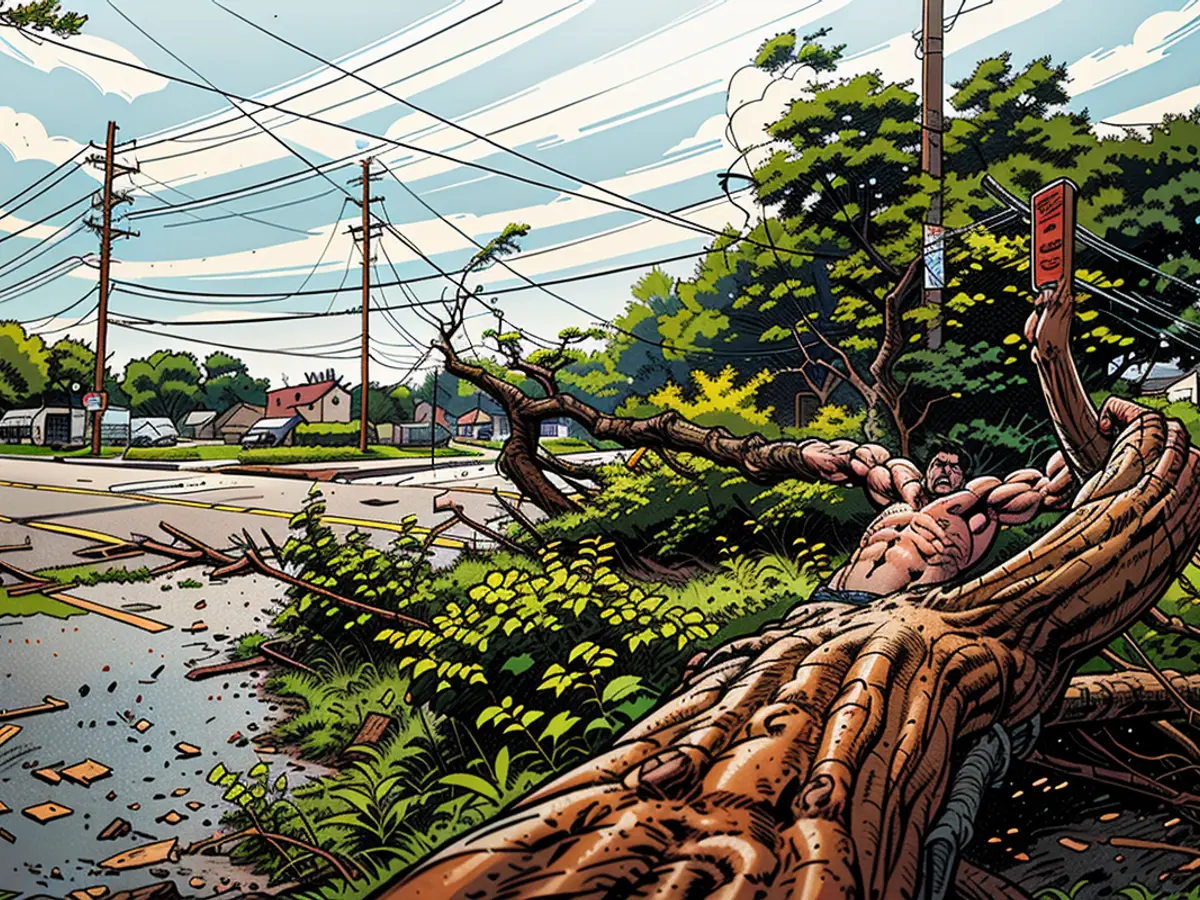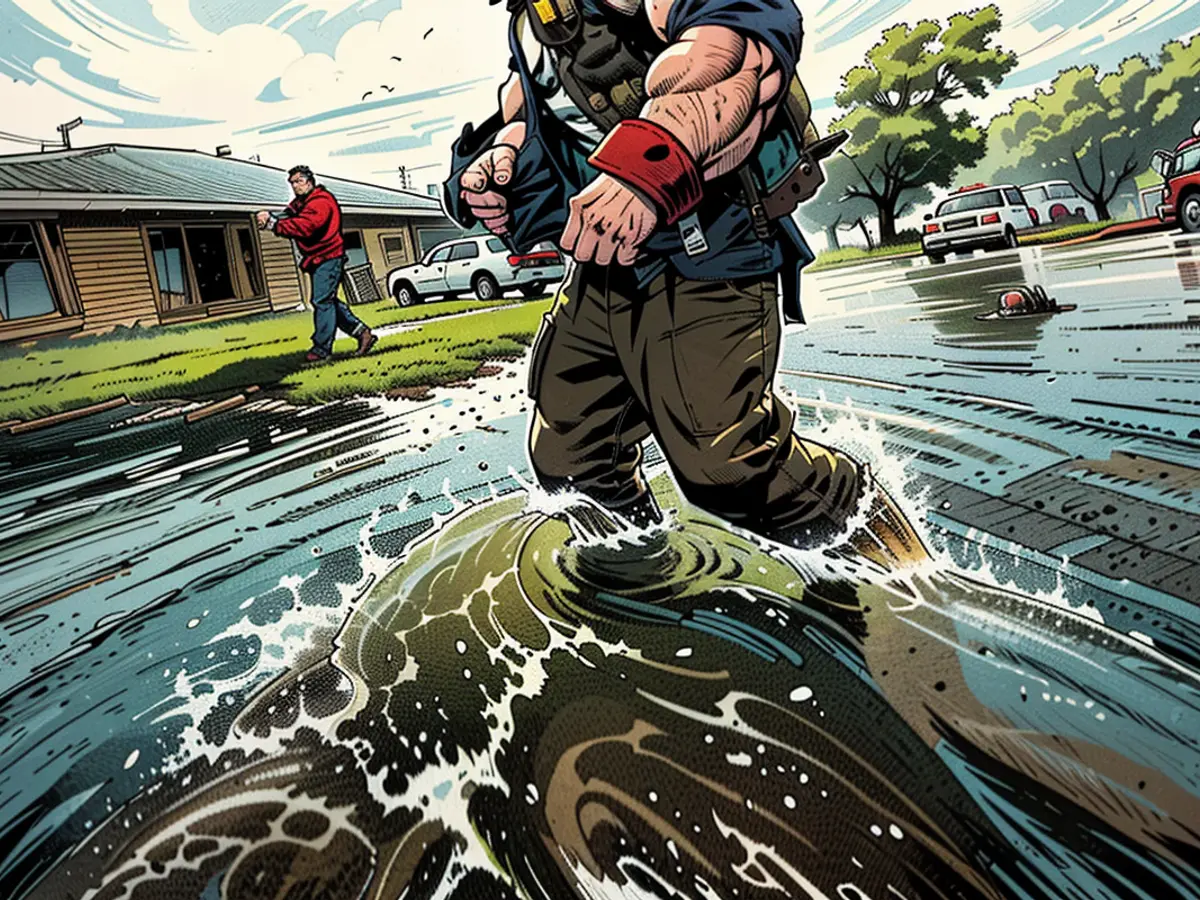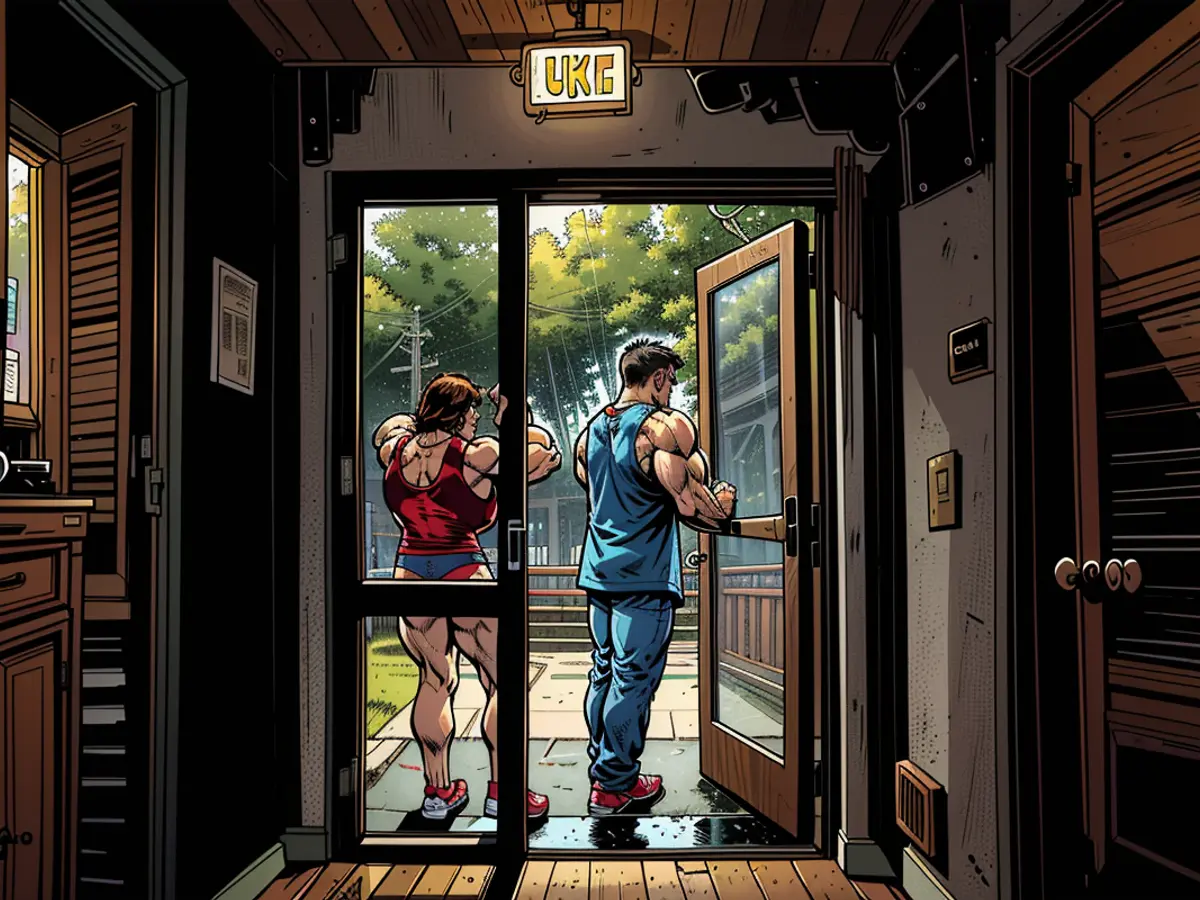Tropical Storm Francine brings heavy downpours and powerful winds, making its way into Louisiana.
• Francine starts to lose power as it moves through Louisiana: The storm's core was located around 20 miles northwest of New Orleans at 1 a.m. CT and was moving towards the northeast at 14 mph. The maximum sustained winds decreased from 100 mph at landfall to 50 mph by early Thursday, according to the National Hurricane Center. Francine will continue to weaken as it moves across west-central Mississippi into the Mid-South Thursday and Friday. "Dangerous storm surges, significant flash and urban flooding, hurricane-force winds, and tornadoes are expected along the Louisiana, Mississippi, and portions of the Alabama coastlines," the National Weather Service warned. The storm is forecast to turn into a tropical depression by late Thursday and a post-tropical cyclone Thursday night or early Friday.
• Heavy rain falls in the New Orleans area: Around 6-8 inches of rain fell in the New Orleans area, as per the National Weather Service, and a flash flood emergency – meaning the potential for catastrophic damage and a risk to life – was temporarily issued Wednesday night for the area. A less severe flash flood warning for metro New Orleans was later issued and was valid until 1:45 a.m. CT Thursday. While no additional rainfall was expected early Thursday, "the area is already experiencing flash flooding," the weather service said. In New Orleans, 90 out of the 99 drainage pump systems – capable of handling one inch of rainfall in the first hour and a half, and an additional inch after that – are operational, according to a city news release.
• Strong winds also hit the region: Tropical storm warnings were in effect early Thursday along a southern stretch of the Gulf spanning from Intracoastal City, Louisiana, to the Alabama-Florida state line, according to the NHC's 1 a.m. CT advisory. Heavy rain and strong winds were affecting New Orleans, with sustained winds of 37 mph and gusts of 47 mph reported at Lakefront Airport. "We are consistently seeing gusts of 55-65MPH across the metro and higher to the southwest," the New Orleans weather service said Wednesday evening. "Stay inside and away from windows!"
• Damage to trees and infrastructure reported: Several parishes along Louisiana's coastline reported fallen trees and power lines as Francine hit the area with damaging winds. Terrebonne Parish, where Francine made landfall, experienced power outages and toppled trees, Chief Communications Officer Robbie Lee said. Flooding and fallen trees were reported across Lafourche Parish, where over 25,000 power outages were reported, a public information officer said. St. James Parish, slightly inland from the coast, reported downed power lines, several exploded transformers, and a carport that was blown away towards the roadway, according to the sheriff's office on X. Jefferson Parish officials urged households to limit their water usage as the parish's large and aging sewer system became overwhelmed by storm runoff.
• Thousands face power outages: Over 389,000 utility customers were without power as of about 12:30 a.m. CT Thursday, according to PowerOutage.us. Some parishes in the south had outages affecting more than half of their utility customers, including Terrebonne, Lafourche, St. Mary, and Assumption parishes. AT&T and T-Mobile customers "over a wide area" were also having issues reaching 911 services for a period of time, but it now appears to be resolved, according to a social media post from the city of New Orleans Wednesday night.
• Tornadoes are also a possibility: A few tornadoes are possible through Wednesday night across sections of southeast Louisiana, southern Mississippi, southern Alabama, and the Florida Panhandle. A tornado watch has been issued for these areas and is in effect until 6 a.m. CT, according to the Storm Prediction Center. On Thursday, the tornado risk will shift into additional areas of Alabama, southwest Georgia, and the Florida Panhandle. Additionally, swells are affecting much of the northern Gulf Coast, likely causing dangerous surf and rip conditions, the NHC said in its advisory.
• Rainfall totals in the South: Francine is expected to bring total rainfall of 4 to 8 inches, with local amounts reaching up to 12 inches across southeastern Louisiana, Mississippi, far southern Alabama, and the Florida Panhandle through Thursday night, according to the National Hurricane Center.
• Francine could lead to life-threatening storm surge: Multiple National Weather Service offices in the region are warning of the potential for life-threatening storm surge, with storm surge warnings in effect for the Louisiana and Mississippi coastlines. Water levels could reach 4 to 6 feet from Pearl River, Louisiana, to Ocean Springs, Mississippi. Evacuation orders were issued for several communities along the Gulf Coast this week, primarily due to the risk of storm surge.
• Flights canceled: All flights out of Louis Armstrong New Orleans International Airport were cancelled on Wednesday, with additional cancellations for Thursday morning, according to an update on the airport's website. The airport is monitoring conditions but will remain open "unless conditions become dangerous." Individual airlines will make decisions on cancellations based on weather conditions in the area, according to the update. Transportation issues also arose when a Carnival cruise scheduled to return on Thursday was delayed from docking in New Orleans due to Francine, according to a post by the cruise line on Tuesday.
• More potential havoc after Francine: Experts at the National Hurricane Center have identified four potential trouble spots, besides Francine, that require monitoring. Although three of these areas hold a low probability of development within the coming week, one, situated roughly 300 miles west of the Cabo Verde islands, has experts on edge. They predict a high likelihood of transformation into at least a tropical depression within the coming days, as per the NHC.
Residents in Louisiana deal with sequential hurricanes
Francine came ashore while locals were still grappling with back-to-back powerful storms that had lashed the state over the past four years.
The 22-story Hertz Tower was demolished over the weekend, having been vacant for years due to incurable damage caused by multiple hurricanes in the region.
In 2020, Hurricane Laura devastated Lake Charles in southwest Louisiana. Its formidable winds reduced homes to rubble, overturned large vehicles, uprooted trees, left numerous residents without power, and claimed at least six lives. Weeks later, Hurricane Delta left a path of destruction in the area, followed by a deadly ice storm that winter.
Just a year on, Category 4 Hurricane Ida plunged southern Louisiana into chaos, particularly impacting the more densely populated areas around New Orleans. Ida brought over 10 inches of rain across sections of the Gulf Coast and generated a storm surge reaching 14 feet.

Terrebonne Parish resident Coy Verdin, 55, informed the Associated Press he had only recently concluded rebuilding his home after Hurricane Ida had damaged it about three years prior. “We had to completely strip out the house,” he stated.
He had initially considered relocating farther inland, but Verdin now intends to stay. “As long as I can. It’s getting tough, though,” he said. He had planned to weather Francine with his daughter in Thibodaux, a city approximately 50 minutes away, but he decided, “I don’t wish to go too far so I can return to check on my house.”
Hurricanes Laura and Ida served as chilling reminders of how anthropogenic climate change is enhancing hurricanes' destructive potential. They left lasting marks on the state and left its residents and infrastructure vulnerable to repeated damage and setbacks in recovery. With time, some residents are still awaiting financial aid, while others are embroiled in legal disputes with insurance companies.
Francine will become the 12th hurricane to hit Louisiana since Katrina's landfall 19 years ago in 2005. This makes Louisiana the state with the most hurricane landfalls within this timeframe.
Louisiana officials advise residents to 'hunker down'
The flood-stricken city of New Orleans prepared for Hurricane Francine by enhancing infrastructure, according to Mayor LaToya Cantrell in a Wednesday press briefing.
“Thanks to our strategic investments in infrastructure, we are better prepared than we’ve ever been before,” she mentioned, urging residents to remain indoors and ‘hunker down’ during the storm.
Some of the advancements include modernizing the city's emergency communication system, as stated by Orleans Parish Communications District Director Karl Fashold.
“We are now in the most advantageous position we’ve ever been when it comes to 911 reliability,” he asserted, highlighting the addition of more staff to handle 911 calls.
New Orleans officials dispensed approximately 2,500 sandbags to the community to shield against the storm. The city also set up emergency resource centers to provide essential supplies, shelter, and assistance post-storm.
City officials advised locals to avoid damaged power lines, flooded roads, and circumnavigating Lake Pontchartrain.
New Orleans Homeland Security director Collin Arnold warned people to utilize generators correctly during power outages – outside of their homes – reminding them that the city “lost more people during Hurricane Ida due to generators than to the storm itself.”
CNN’s Taylor Romine, Rachel Ramirez, Robert Shackelford, Elizabeth Wolfe, Taylor Ward, Sara Smart, Brandon Miller, Mary Gilbert, Chris Boyette, Amanda Musa, and Melissa Alonso contributed to this report.
• The residents in Louisiana, including Verdin, are preparing for Francine: Despite having only recently completed rebuilding his home after Hurricane Ida, Terrebonne Parish resident Coy Verdin decided to stay and prepare for Francine, planning to stay with his daughter in Thibodaux.
• Louisiana officials are urging residents to stay safe: New Orleans Mayor LaToya Cantrell encouraged residents to remain indoors and 'hunker down' during Hurricane Francine, citing the city's improved infrastructure and emergency systems.









